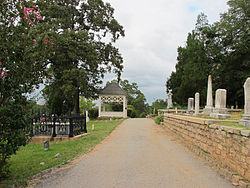
DeKalb County is located in the north central portion of the U.S. state of Georgia. As of the 2020 census, the population was 764,382, making it Georgia's fourth-most populous county. Its county seat is Decatur.
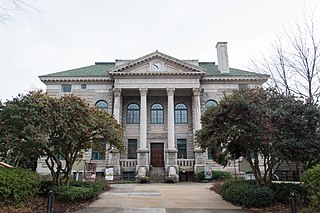
Decatur is a city in, and the county seat of, DeKalb County, Georgia, United States, part of the Atlanta metropolitan area. With a population of 24,928 in the 2020 census, the municipality is sometimes assumed to be larger since multiple ZIP Codes in unincorporated DeKalb County bear Decatur as the address. The city is served by three MARTA rail stations. The city is located approximately five miles northeast of Downtown Atlanta and shares its western border with both the city of Atlanta and unincorporated DeKalb County. The Druid Hills neighborhood is to the northwest of Decatur.
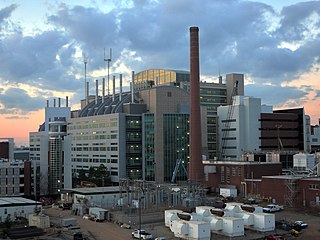
Druid Hills is a community which includes both a census-designated place (CDP) in unincorporated DeKalb County, Georgia, United States, as well as a neighborhood of the city of Atlanta. The CDP's population was 14,568 at the 2010 census. The CDP formerly contained the main campus of Emory University and the Centers for Disease Control and Prevention (CDC); however, they were annexed by Atlanta in 2018. The Atlanta-city section of Druid Hills is one of Atlanta's most affluent neighborhoods with a mean household income in excess of $238,500.

North Druid Hills, also known as Briarcliff or Toco Hills, is an unincorporated community and census-designated place in DeKalb County, Georgia, United States. The population was 18,947 at the 2010 census. The commercial center of the area is the Toco Hill Shopping Center, located near the intersection of North Druid Hills Road and LaVista Road.

Tucker is a city located in DeKalb County, Georgia, United States, located near Atlanta and was originally settled in the 1820s, and later developed as a railroad community in 1892. According to the 2016 United States Census Bureau annual estimate of resident population, it has a population of 35,322. In a November 2015 referendum, by a 3:1 margin (73.94%), voters approved incorporating Tucker into a city. In March 2016, Tucker residents elected the city's first mayor and city council.
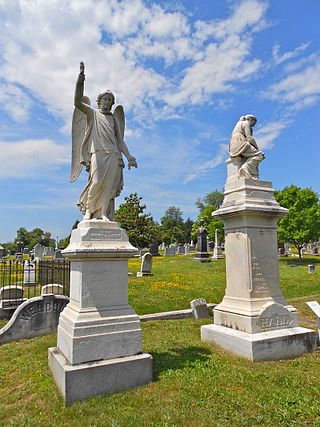
The Congressional Cemetery, officially Washington Parish Burial Ground, is a historic and active cemetery located at 1801 E Street, S.E., in Washington, D.C., on the west bank of the Anacostia River. It is the only American "cemetery of national memory" founded before the Civil War. Over 65,000 individuals are buried or memorialized at the cemetery, including many who helped form the nation and Washington, D.C. in the early 19th century.

Oakland Cemetery is one of the largest cemetery green spaces in Atlanta, Georgia, U.S. Founded as Atlanta Cemetery in 1850 on six acres (2.4 hectares) of land southeast of the city, it was renamed in 1872 to reflect the large number of oak and magnolia trees growing in the area. By that time, the city had grown and the cemetery had enlarged correspondingly to the current 48 acres (190,000 m2). Since then, Atlanta has continued to expand so that the cemetery is now located in the center of the city. Oakland is an excellent example of a Victorian-style cemetery, and reflects the "garden cemetery" movement started and exemplified by Mount Auburn Cemetery in Massachusetts.
There were several historic mills around the metro Atlanta area, for which many of its current-day roads are still named. Most of the mills date back to the 1820s and 1830s, and were built along the area's many streams. The locations of many of these mills are shown on a map of 1875 showing U. S. military operations around Atlanta in 1864. This map is now located in the U. S. Library of Congress but can be seen on the webpage linked here.
William E. Ezzard was a Southern United States politician who served as the 11th, 13th and 19th Mayor of Atlanta, Georgia, in the 19th century.

Spring Grove Cemetery and Arboretum is a nonprofit rural cemetery and arboretum located at 4521 Spring Grove Avenue, Cincinnati, Ohio. It is the third largest cemetery in the United States, after the Calverton National Cemetery and Abraham Lincoln National Cemetery and is recognized as a US National Historic Landmark.
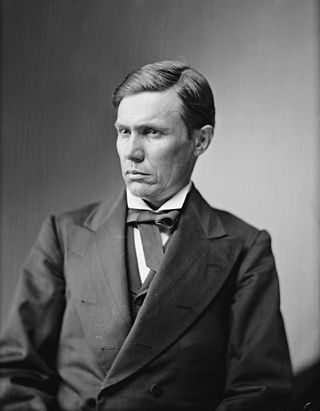
Milton Anthony Candler was an American lawyer, Confederate officer and politician from an influential Georgia family of businessmen and politicians. He served two terms in the U.S. House of Representatives.
Winnona Park is a historic area in the southeast corner of the Atlanta, Georgia suburb of Decatur. It is listed as a historic district on the National Register of Historic Places, but it is not one of the City of Decatur's locally designated historic districts.
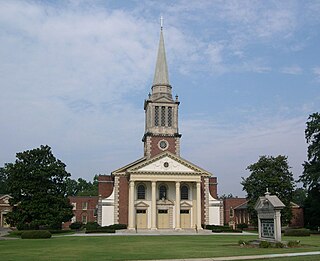
Clairemont - Great Lakes is a historic neighborhood in the north central section of the Atlanta, Georgia suburb of Decatur. It primarily consists of residences and churches. However, there are businesses on West Ponce de Leon Avenue, in the southernmost section of the neighborhood. Its rough boundaries are Coventry Road, Ponce de Leon Avenue and Commerce Drive on the south; Church Street on the east; Scott Boulevard on the north; and Willow on the northeast. The section of Superior Avenue north of Scott Boulevard is also considered part of this neighborhood. Ridgeland Park, located northeast of the Clairemont - Great Lakes neighborhood, is not presently considered part of the neighborhood. It was developed later (1946–1950) and is in unincorporated DeKalb County. However, in 2008 the city of Decatur began evaluating annexation of this neighborhood, which is contiguous to the rest of the development.
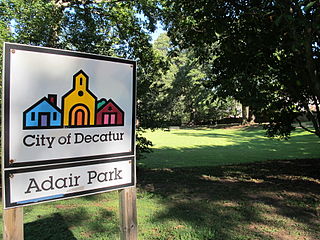
Adair Park is a historic and contemporary community in the west section of the Atlanta, Georgia suburb of Decatur. It is one of Decatur’s most diverse communities in terms of building types, and includes several individual neighborhoods. Adair Park has single family residences, townhomes, cluster homes, institutional buildings and commercial buildings – built from the early 1900s to 2008. Its rough boundaries are: downtown Decatur to the east; Ponce de Leon Avenue to the north; Howard Avenue and the railroad tracks to the south; and the Parkwood neighborhood to the west. There is also an Adair Park in southwest Atlanta, but it is not part of the Decatur community.
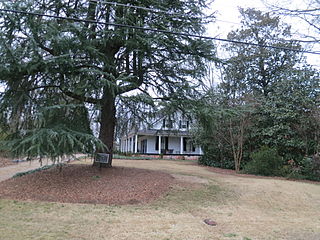
Meadow Nook is an antebellum house in Atlanta, Georgia. It is located at 2420 Alston Drive in the East Lake neighborhood, in DeKalb County. It is one of only three antebellum homes still standing in their original locations within the city limits.

Mary Ann Harris Gay was an American writer and poet from Decatur, Georgia, known for her memoir Life in Dixie During the War (1897) about her life in Atlanta during the American Civil War. Author Margaret Mitchell said Gay's memoir inspired some passages in her novel Gone with the Wind (1936). Gay also published a book of poetry in 1858, which she republished after the war to raise money to help support her mother and sister.

The Mary Gay House is a historic house at 716 West Trinity Place in downtown Decatur, Georgia. It was the home of Mary Ann Harris Gay, who moved there with her mother and sister about 1850. She and her sister lived there during the American Civil War and afterwards. The house was built approximately 1850 and is one of the few extant pre-Civil War buildings in the area. The house was entered into the National Register of Historic Places (NRHP) on May 6, 1975. It is now named "716 West" and is used as a wedding/event venue.

The Swanton House is a historic building in downtown Decatur, Georgia and is one of a very few pre-Civil War buildings in the area which are still standing. It was entered into the National Register of Historic Places on August 30, 1978.

The Flat Rock Archives is an African American historical museum located in the city of Stonecrest, Georgia. The mission of the archive is to preserve rural African American history in Georgia. The archive is located in a historic home built by T.A. Bryant, Sr., and was donated in 2005, by Rev. T.A. Bryant, Jr. and his sister, Zudia Guthrie, to preserve and store all the Flat Rock records and documents. It was established as a museum and resource to genealogical and historic research, as well as a heritage tourism site. The Flat Rock Archives consists of a variety of historic sites including the Flat Rock African American Historic Cemetery. All of these sites are located within the Arabia Mountain National Heritage Area. See Flat Rock, Georgia to learn more about the history of this area.

Bellevue Cemetery is a historic cemetery in Danville, Kentucky. It was established in the 1840s and was originally named Danville City Cemetery.
